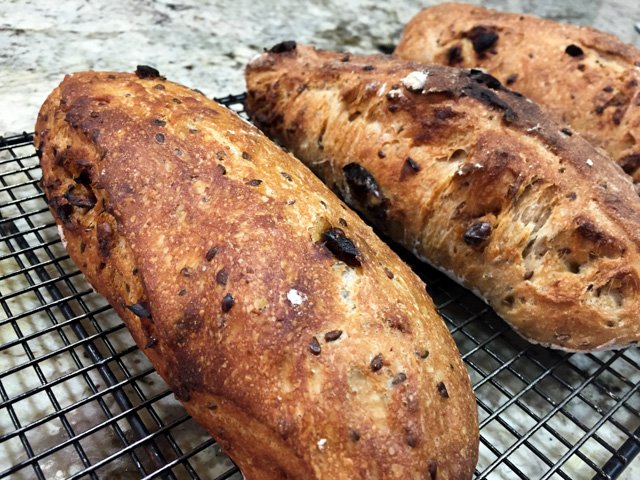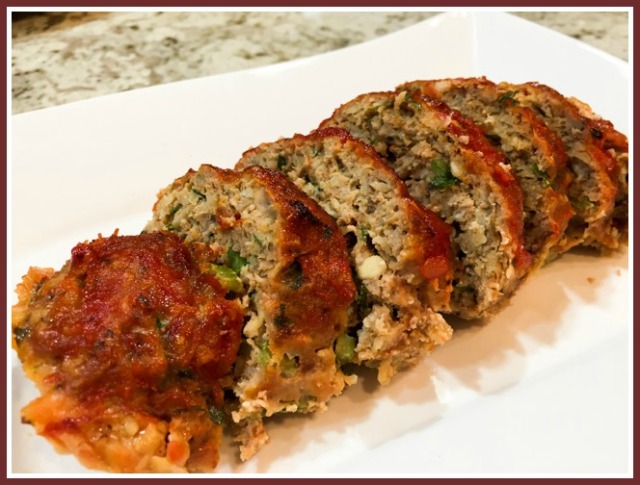FOUR YEARS AS A MEMBER OF THE SECRET RECIPE CLUB!
 .
.
It’s that fun time of the month again, Reveal Day of The Secret Recipe Club, a virtual event in which food bloggers are assigned a site in secret, then blog about a chosen recipe at midnight of Reveal Day. In two words: incredibly awesome. But what is more awesome than that is the blog I got this month. I almost passed out from excitement, thrill, and joy. Why? Because my assigned site is one of my favorites in the whole food blogosphere: Karen’s Kitchen Stories. Just to make an analogy, if blogging was like acting, my Secret Acting Club assignment would be Meryl Streep. Yeap, that awesome! I’ve been reading Karen’s blog forever, I consider her as one of my personal gurus in bread baking. She is the type of baker who is not afraid to push the limits, moving easily from tangzhong type breads to bialys, baguettes, all sorts of rustic sourdoughs, Pullman type loaves, really amazing what she can do with flour, water, salt, and yeast, often wild (the yeast, not her). At my last count, she’s got 247 bread recipes in her blog. Two hundred and forty-seven. You can collect your chin off the floor now. I bookmarked so many recipes that it was not even funny. Just to give you a small sampling of the breads that tempted me: Cheese and Herb Happy Bread, Cinnamon Swirl Pumpkin Rolls , Corn and Jalapeno Rolls (oh, my!), English Muffin Bread (I really need to make this one!), Tangzhong Whole Wheat Bread (very interesting method), Kesra Moroccan Flatbread, Hawaiian Style Sweet Rolls (reminds me of my childhood in Brazil), Stuffed Pretzel Bites (O.M.G.!). Of course, that doesn’t include the breads from her site I already made like the delicious Ka’Kat. or Forkish’s Warm Spot Sourdough. But of course there’s a lot more than bread in her blog. For instance, if you like stir-fries, she has a section on Wok Wednesdays that is a must-follow, holding so far 57 entries. The bottom line is, I had no choice but to make two recipes from her site. A rustic ciabatta, because it would be almost rude not to choose a bread from Karen’s blog, and some mini-meatloaves because they looked so incredibly cute, I could not stop dreaming about them…

RUSTIC CIABATTA WITH DATES AND FLAX SEEDS
(from Karen’s Kitchen Stories)
48 grams flaxseeds
125 grams unbleached bread flour
278 grams (~1 1/4 C) water
ENJOY!
to print the recipe, click here
.

Comments: I made this bread in one of those perfect Saturdays! Why? Because I woke up before 5am feeling super energetic, could hardly wait to get downstairs and play with my ingredients already measured since the evening before. During the first 45 minutes rise I did a nice P90X yoga while the house was still dark, peaceful and silent… As in a perfectly timed symphony, just as I finished my exercises, Phil woke up and made me a fantastic cappuccino…. the dogs immediately joined us in welcoming the weekend…Told ya: perfect Saturday!
.

We both loved this bread! The dates offer a burst of sweetness that plays well with the almost sour nature of the dough given by the extended fermentation of the poolish. Cut a slice, toast it very very lightly, top it with some Gorgonzola and you will have to tie yourself to your seat not to fly away in a magic carpet…. Awesome combo.
And now, for the bonus recipe from Karen’s site… Adorable meatloaves in individual servings. Her recipe used beef, I changed it slightly by using ground turkey.

INDIVIDUAL MEATLOAVES WITH CHILI SAUCE
(adapted from Karen’s Kitchen Stories)
1/3 cup packed flat leaf parsley leaves
.
ENJOY!
.
to print the recipe, click here

.
These meatloaves were sooooo good! The chili sauce is a must, do not skip it. They turned out moist, flavorful, spicy but not overly so. I served them with sweet potato noodles that were recently published in my guest post over at Foodbod. The recipe made 3 loaves and we enjoyed them for dinner, then I had leftovers for my lunch a couple of days in a row. Heaven. Just heaven. If I may make a public confession, I had some slices straight from the fridge. Cold. Yeah, standing up, with a Jack Russell staring at me wondering how long it would take for Newton’s Law of Gravity to work its magic in his favor. HA! Not a chance!
Karen, I hope you enjoyed your assignment this month. It goes without saying that I spent the past 4 weeks anticipating this Reveal Day, anxious to share the recipes I made from your blog. For my readers, if you don’t yet know Karen’s Kitchen Stories, stop right now and go pay her a visit. Not only she is a great baker and cook, but a very cool person with great sense of humor and wit. Plus, she is the Grandma of two beautiful boys, and lucky to live very close to them, so it’s easier for her to spoil them rotten. I intend to follow her footsteps and do my best to spoil Greenlee at every chance I get… Maybe one day I can teach Greenlee to bake a chocolate cake for her Dad too. Oops, did I just use “teach” and “bake a cake” in the same sentence? Excuse me while I go grab a thermometer. I might be running a very high fever… (sigh)
ONE YEAR AGO: Green Rice
TWO YEARS AGO: Potato-Crusted Italian Mini-Quiches
THREE YEARS AGO: Beetroot Sourdough for the Holidays
FOUR YEARS AGO: Cod Filet with Mustard Tarragon Crust
FIVE YEARS AGO: Soba Noodles: Light and Healthy
SIX YEARS AGO: Potato-Rosemary Bread





























